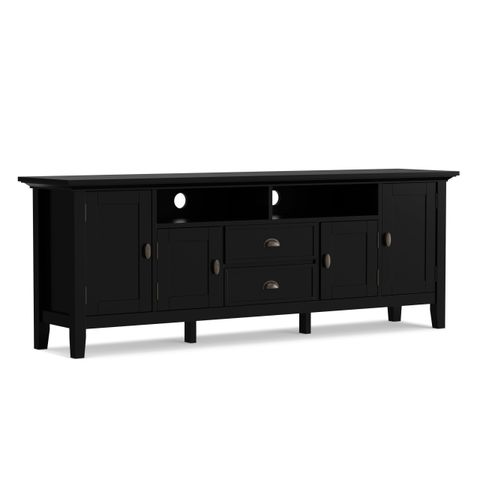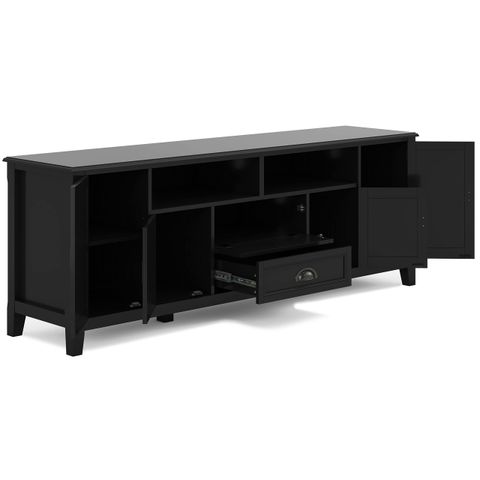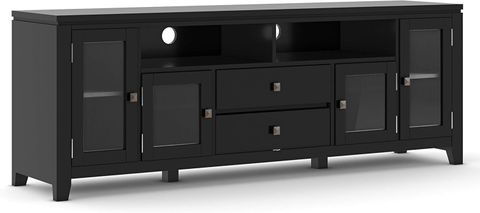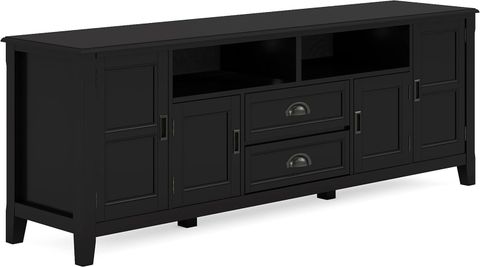Picture this: You’re settling in for a movie night, your favorite show is playing, and everything just feels right. The lighting is perfect, the sound fills the room without overwhelming it, and the technology is hidden away but always ready to go. That’s what happens when you design a media entertainment center that truly works for your lifestyle. It’s not just about putting a TV on the wall anymore – it’s about creating spaces that feel intentional, comfortable, and perfectly suited to how you actually live.
When we think about our homes today, we’re not just looking for places to sleep and eat. We want spaces that reflect who we are and how we choose to spend our time. For many families, that means having a dedicated area for entertainment – somewhere where you can watch movies, play games, listen to music, and connect with others. But designing a media entertainment center isn’t just about finding a spot for your television. It’s about understanding how people actually use their spaces, what makes them comfortable, and how to integrate technology in ways that enhance rather than complicate daily life. This isn’t just about aesthetics – it’s about functionality, flow, and making sure every element serves a purpose in your home’s overall design.
Understanding the User Experience
The heart of any good entertainment center lies in understanding who will use it and how they’ll interact with it. Think about your family’s habits. Do you have kids who love watching cartoons? Are you someone who enjoys gaming with friends? Is your home a place where you regularly host gatherings? These questions shape everything from the size of the screen to the placement of speakers.
Consider the viewing distance too. A large screen might seem impressive, but if someone has to strain to see it from across the room, it defeats the purpose. The rule of thumb is about three times the screen width for optimal viewing distance. For example, a 55-inch TV needs roughly 15 feet of viewing distance. But what about those moments when you’re sitting close to the screen for gaming? That’s where flexibility comes in.
Take a moment to think about your daily routines. When do you typically watch shows? During dinner? After the kids are asleep? During the day? These patterns influence how you position your entertainment center and what features you prioritize. A center designed for late-night movie marathons needs different considerations than one meant for morning news consumption. Sometimes, it’s not just about the equipment itself, but how easily everyone can access it and use it without hassle.
Space Planning and Layout Strategies
Every home has its unique challenges and opportunities. What works in a sprawling modern mansion might not work in a cozy apartment. The key is adapting your approach to fit the space you have. Start by measuring your room carefully. Not just the walls, but the furniture, doorways, and windows. How much space do you really have to work with?
Think about traffic flow. Where do people naturally move in your living space? You wouldn’t want to put your entertainment center right in the middle of a high-traffic area where people constantly bump into it. Instead, consider corners, walls adjacent to seating areas, or spaces that naturally create a viewing zone.
One common mistake is assuming you need a big space for a big screen. Often, smaller rooms can handle larger screens if you plan carefully. The key is using the right proportions. If you’re working with a narrow space, maybe a curved screen could make better use of the available area. Or perhaps a wall-mounted setup could save floor space for other activities.
Don’t forget about storage needs. You’ll probably want to keep cables, remotes, and accessories organized. Plan for shelves, cubbies, or even hidden storage compartments. Some people prefer to keep all their gear visible for easy access, while others like to hide everything away until it’s needed. Both approaches have merit, but they require different design considerations.
Integration of Technology and Aesthetics
Today’s entertainment centers are no longer just about displaying equipment. They’re about blending that equipment seamlessly into the room’s overall look and feel. This means thinking about how cables are managed, how components are housed, and how everything contributes to the space’s visual harmony.
Cable management is often overlooked, but it makes a huge difference in the final look. You don’t want to see a jungle of wires running across your walls or floor. There are several solutions: cable raceways built into furniture, hidden channels behind panels, or even wireless options for some devices. The goal is to make the technology invisible when you’re not using it.
Consider materials and finishes. If your home has warm wood tones, maybe a dark wood entertainment center would complement that. If your space is more minimalist with clean lines, a sleek metal or glass option might fit better. The colors and textures should either echo or contrast appropriately with the rest of the room.
Modern entertainment centers often feature multiple display options. Maybe you have a large TV for movies, a smaller screen for gaming, or even a projector for immersive experiences. How do these different displays work together? Do they need to be in the same location, or can they be separated? Sometimes, having multiple viewing spots creates more flexibility and enjoyment for different activities.
Lighting and Ambiance Considerations
Lighting plays a crucial role in how well your entertainment center functions and feels. Good lighting can make a space inviting and comfortable, while poor lighting can create eye strain and make it hard to enjoy your content.
Natural light is wonderful, but it’s not always predictable. You’ll want to consider how sunlight affects your viewing experience throughout the day. Does your room get lots of morning sun? That might make it difficult to see content during certain hours. You might need to think about window treatments that can control light levels without blocking views completely.
Artificial lighting should complement rather than compete with your entertainment setup. Task lighting near seating areas helps people see their phones or books without disturbing the main viewing experience. Ambient lighting can set the mood for different activities. Soft, dimmable lights work well for movie nights, while brighter lighting might be better for gaming or socializing.
Many modern entertainment centers incorporate LED strips or integrated lighting that can change color or brightness. These features add flexibility and can create different atmospheres for different times of day or activities. But remember, less is often more. Too many light sources can become distracting rather than helpful.
Storage Solutions and Organization Systems
We all know that technology accumulates over time. Whether it’s old cables, forgotten devices, or seasonal accessories, keeping everything organized is essential for maintaining a clean, functional space.
Start with what you already have. Take inventory of all your devices, cables, and accessories. This helps you determine how much storage you really need and what types of storage solutions will work best. Some people prefer open shelving for easy access, while others like closed cabinets for protection and tidiness.
Think about accessibility. Where do you use things most frequently? Your remote control should be within easy reach, but maybe not visible to guests. Your gaming console might need frequent access but doesn’t need to be on display. Storage solutions should accommodate both visibility and practicality.
Modular systems offer flexibility as your needs change. As new devices come into your life, you might need to adjust storage arrangements. Look for systems that can adapt to different sizes and types of equipment. This is particularly important in homes with children or multiple users who might have different preferences.
Consider the emotional aspect of organization too. A cluttered space can make anyone feel stressed or overwhelmed. When everything has its place, it creates a sense of calm and control that enhances the entire entertainment experience.
Flexibility and Future-Proofing Design Elements
Technology changes fast, and what seems cutting-edge today might be outdated tomorrow. That’s why building flexibility into your entertainment center design is crucial.
Look for adaptable solutions that can grow with your changing needs. Universal mounting systems allow you to reposition components as needed. Cable management systems that can accommodate new devices without major renovations are worth investing in. Even simple choices like using standard-sized components instead of custom-made pieces give you more options down the road.
Think about connectivity. Will you be streaming content wirelessly? Do you need multiple HDMI inputs? Will you be adding smart home features later? Planning for these possibilities means you won’t have to completely redesign your space every few years.
Budget considerations matter here too. You don’t need to build the most expensive system possible, but you should invest in quality components that will last and adapt. Sometimes it’s better to spend a bit more upfront on flexible solutions than to replace everything later. A well-designed system should serve you for years, adapting to changes in technology and your lifestyle without requiring major overhauls.
The future of entertainment is increasingly connected and mobile. Consider how your entertainment center might need to support different types of content delivery, whether that’s streaming services, gaming platforms, or even virtual reality experiences. Designing with this in mind creates a foundation that can support whatever comes next.
Creating a media entertainment center that truly works for your home requires balancing many different factors. From understanding how you and your family actually use space to planning for technology that will evolve with time, there’s a lot to consider. But when done right, the result is a space that enhances your daily life rather than complicating it. The best entertainment centers aren’t just about impressive displays – they’re about thoughtful integration that makes everyone in the household feel comfortable and engaged. Whether you’re designing for a large family room or a small apartment, the principles remain the same: put people first, consider how things will be used, and make sure everything works together harmoniously. The end goal is simple: a space where technology supports your lifestyle, not controls it. When you’ve achieved that balance, your entertainment center becomes more than just a place to watch TV – it becomes a true centerpiece of your home’s character and function.














